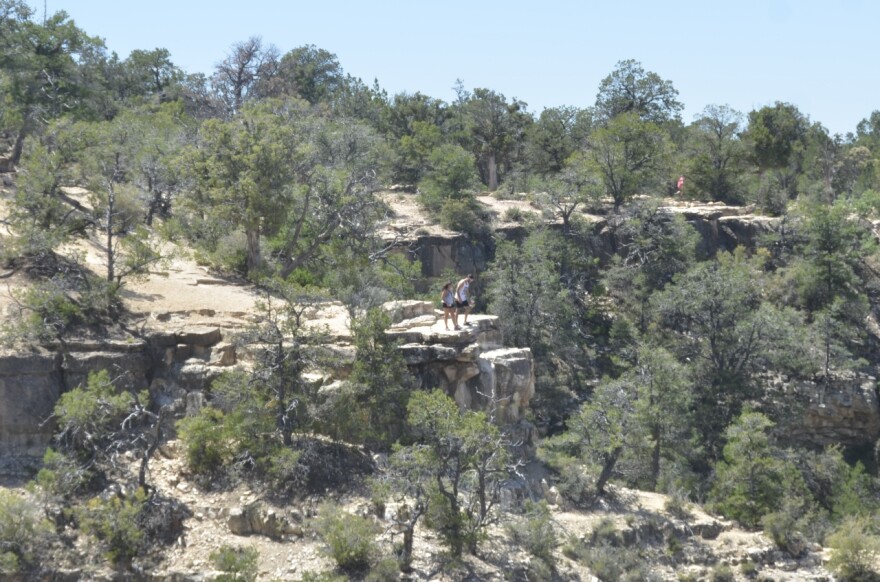The Grand Canyon has the dubious distinction of having one of the highest rates of suicide among national parks. While they are destinations for millions of sightseers each year, some people arrive with the intention of ending their lives. During this National Suicide Prevention Week, KNAU’s Ryan Heinsius reports, that victims, families, and first responders at parks all experience the ripple effects of suicide and suicide attempts.
This story doesn’t begin in Arizona. It starts on San Francisco’s Golden Gate Bridge where Kevin Hines attempted to end his life on a September day in 2000.
“It wasn’t that I wanted to die. I 110 percent believed I had to die. I was compelled to die. And I jumped,” he says.

Two hundred and twenty feet straight down into the icy waters of the Pacific Ocean. He shattered three vertebrae and suffered massive internal injuries. But he didn’t accomplish his goal. Someone saw him jump and called the Coast Guard.
“They physically saved me, got me to an ambulance, I nearly died in the hospital, yet here I am. I always say I’m not lucky to be alive, I’m lucky to be anywhere,” he says.

Hines is one of only 36 known survivors to jump from the Golden Gate since its construction in the 1930s. It’s connected to a national recreation area and almost daily attracts suicidal people. For some it might be because of the beauty and grandeur of such areas. For Hines it was something else.
“It wasn’t because it was beautiful, it wasn’t because of the view. It was very simple: ease of access to lethal means,” he says.
And that’s why some people come to the Grand Canyon to end their lives. Matt Vandzura is chief ranger at the park, and has been part of many suicide rescues and recoveries.
“I think that the sort of legend and lore of the place, the size, it attracts people,” he says.

Since 2002 there have been more than 40 confirmed suicides at the Grand Canyon. Officials suspect that number could be higher though, because of the canyon’s magnitude and easy access to the rim. That’s why rangers receive suicide prevention training, and learn to look for subtle signs in visitors like despondence and distress, or even abandoned cars. But Vandzura says they aren’t professional mental health workers.
“Many times the circumstances, the situation that has driven someone to the point where suicide is a viable option for them are not things park rangers at a national park can fix. What we can do is assure people that we’re here for them, to listen to them, there are people who are available,” he says.

One of those people is Brenda Manthei, a Flagstaff psychotherapist and intervention coordinator. She conducts suicide prevention training for Grand Canyon rangers, including how to talk to potentially suicidal people.
“And yeah it is scary, and yeah, every time you ask someone you have to prepare yourself for the answer, because that answer could be yes,” she says.
Manthei instructs rangers and other personnel to look for what she calls invitations—behaviors that indicate suicidal thoughts, like feelings of being a burden to loved ones, or lacking purpose.
“Because we’re human and we are social creatures you can feel in your gut if something’s going on, if someone is feeling desperate,” she says.
Kevin Hines, who survived his jump from the Golden Gate Bridge, will soon release a film called “Suicide: The Ripple Effect.”
“I was saying to myself, ‘Why is this happening to me? Why couldn’t I be normal?’ They were screaming in my head: ‘You must die! You must die now! Jump now!’ And I did,” he says in the film.
Hines’ accidental survival transformed his desperation into a need to help. He now works with other survivors and victims’ families, many of whom he interviewed for his film.
“I have now lived 15 years past the day I should have died,” Hines says in “Ripple Effect,” “and I’m truly grateful for that second chance at life.”








